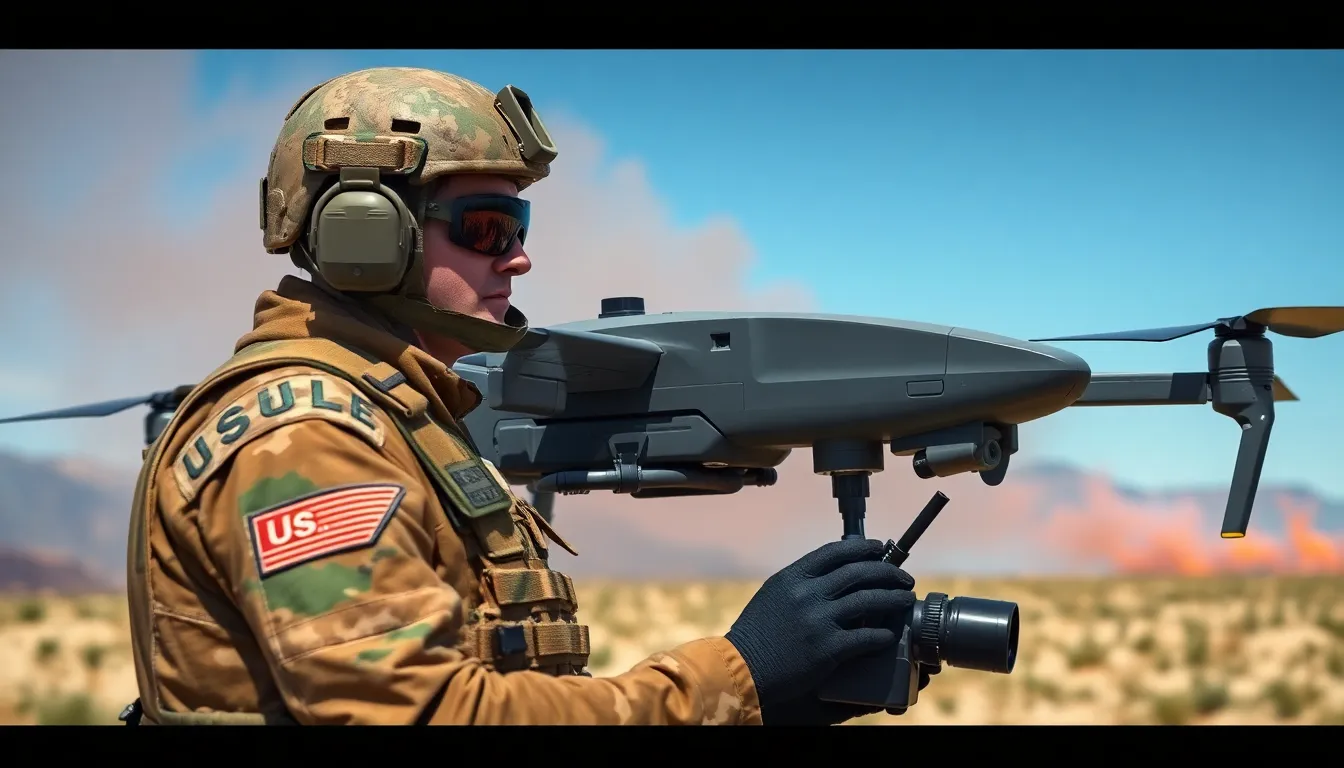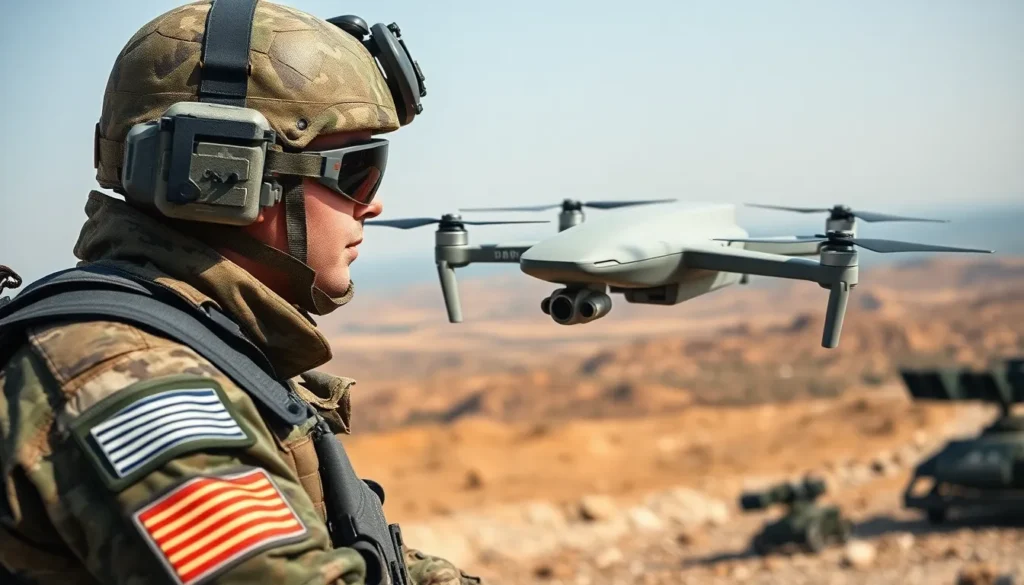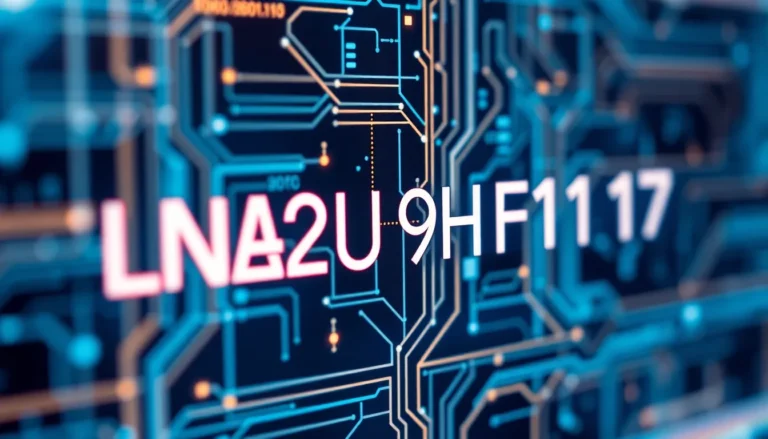In the high-stakes world of modern warfare, it’s not just the soldiers on the ground who are making waves; it’s the drones flying high above. Battlefield UAV drones have transformed how military operations are conducted, turning the skies into a playground for cutting-edge technology. These flying machines aren’t just for surveillance; they’re the ultimate multitaskers, gathering intel, delivering supplies, and even providing air support—all while avoiding awkward small talk with the enemy.
Imagine a tiny robot flying over enemy lines, equipped with cameras and sensors, all while sipping on a virtual coffee. It’s the future of combat, where precision meets innovation. As armies embrace this aerial revolution, the battlefield is becoming less about boots on the ground and more about high-tech gadgets soaring through the air. Strap in as we dive into the fascinating world of UAV drones and explore how they’re reshaping warfare, one flight at a time.
Table of Contents
ToggleOverview of Battlefield UAV Drones
Battlefield UAV drones play a crucial role in modern military operations, often defined by their versatile capabilities. These unmanned aerial vehicles serve purposes such as reconnaissance, supply delivery, and targeted air support, enhancing operational efficiency while reducing risk to personnel.
Definition and Purpose
UAV drones, or unmanned aerial vehicles, represent a class of aircraft operated remotely. They perform specific tasks that include surveillance, gathering real-time intelligence, and conducting airstrikes. In military contexts, these drones facilitate information acquisition across vast areas. With their ability to operate without putting human pilots in danger, UAVs significantly alter combat strategies and decision-making processes. They enable forces to execute missions with precision and low risk of casualties. As technologies advance, the capabilities of these drones continue to expand, enhancing their tactical versatility on the battlefield.
Evolution of Technology
Technological advancements have driven the evolution of battlefield UAV drones. Initially, early reconnaissance drones offered limited functionality. Modern drones possess sophisticated sensors, advanced imaging capabilities, and automated navigation systems. These innovations allow for greater operational range and improved mission success rates. The integration of artificial intelligence and machine learning enhances real-time analysis, enabling autonomous flight and target acquisition. Innovations such as stealth technology further minimize detection risks. Various military organizations now focus on ensuring that UAVs remain operationally relevant in increasingly complex battlefield scenarios. This continuous evolution shapes the future of military engagements.
Key Features of Battlefield UAV Drones

Battlefield UAV drones feature advanced technologies that enhance their operational effectiveness. They play vital roles in both surveillance and combat scenarios.
Surveillance Capabilities
Surveillance remains a primary function of UAV drones, allowing for extensive reconnaissance. Cutting-edge sensors capture high-resolution imagery and video in real-time. Operators analyze data collected from various altitudes, which improves situational awareness. These drones often use thermal imaging to detect heat signatures, even in low visibility conditions. Additionally, they can cover large areas quickly, providing commanders with timely intelligence for strategic decision-making.
Combat Applications
Combat applications for battlefield UAV drones include precision strikes against enemy targets. Equipped with guided munitions, these drones execute operations with minimal collateral damage. Coordination with ground forces ensures that attacks target specific threats effectively. They also provide air support in hostile environments, assisting troops on the ground. With the ability to linger over battlefields for extended periods, UAVs quickly adapt to rapidly changing combat situations. Overall, the integration of drones into military strategy enhances operational capabilities and reduces risks to personnel.
Advantages of Battlefield UAV Drones
Battlefield UAV drones offer significant advantages that enhance military operations. These technologically advanced machines provide critical benefits in various operational settings.
Enhanced Situational Awareness
Enhanced situational awareness arises from UAV drones’ ability to collect real-time data. High-resolution imagery and video allow commanders to make informed decisions quickly. Utilizing advanced sensors, these drones monitor vast areas, reducing blind spots in reconnaissance. This comprehensive coverage improves overall battlefield intelligence. Warfare tactics evolve as UAVs reveal enemy positions and movements swiftly. Moreover, data analysis tools further augment situational awareness, enabling quick interpretation of gathered information.
Risk Mitigation for Ground Troops
Risk mitigation for ground troops significantly improves through the deployment of UAV drones. These drones conduct reconnaissance missions without placing personnel in harm’s way. By using UAVs, forces can gather intelligence on enemy activity while maintaining safe distances. This operational strategy reduces exposure to direct fire and ambushes. When engaging targets, drones execute precision strikes, minimizing collateral damage and safeguarding nearby troops. Consequently, UAVs enable commanders to adjust tactics effectively, ensuring the safety of ground operations while achieving mission objectives.
Limitations of Battlefield UAV Drones
Battlefield UAV drones, despite their many advantages, face notable limitations that influence their effectiveness in military operations.
Operational Constraints
Operational constraints hinder battlefield UAV drones from achieving full potential. Weather conditions such as heavy rain, fog, or high winds can disrupt flight operations, leading to mission delays. Additionally, geographic obstacles like mountains or urban structures can obstruct signal transmission, limiting communication between operators and drones. Limited battery life restricts flight duration and range, especially during prolonged missions. Size and payload capacity constraints further impact the types of equipment or munitions they can carry. These factors necessitate careful planning and evaluation before deploying drones for critical assignments.
Ethical Considerations
Ethical considerations surround the use of UAV drones in combat scenarios. Questions about accountability arise when drones execute lethal strikes, often making it difficult to pinpoint responsibility for collateral damage. Privacy concerns also emerge with surveillance capabilities, as UAVs can unintentionally capture images of civilians or private property. The potential for autonomous decision-making by drones raises moral dilemmas, particularly regarding life and death situations. These ethical challenges require military leaders to weigh tactical advantages against moral implications, fostering discussions about regulations and oversight in drone warfare.
Future Trends in Battlefield UAV Drone Technology
Advancements in battlefield UAV drone technology continue to shape military operations significantly. Innovations in both design and integration with other technologies are driving these changes.
Innovations in Design
Emerging designs focus on improved aerodynamics and stealth capabilities. These advancements reduce detectability while increasing flight endurance. Manufacturers are exploring materials that enhance durability without adding weight. Modular designs allow for rapid reconfiguration based on mission requirements. Smaller UAVs are becoming more prevalent, enabling operations in confined spaces. Enhanced sensor technology improves data collection efficiency, providing high-resolution imagery during reconnaissance missions. Innovations in propulsion systems contribute to quieter operations, promoting stealth in combat situations.
Integration with Other Technologies
Integration of battlefield UAV drones with artificial intelligence enables autonomous mission execution. AI enhances real-time data analysis, allowing commanders to make informed decisions quickly. Connections with satellite systems improve communication and navigation accuracy. These drones now incorporate advanced data-sharing protocols to streamline information flow among units. Additionally, collaborations with ground vehicles create a unified operation strategy. Drones equipped with advanced targeting systems improve precision in airstrikes. Innovations in cybersecurity protect sensitive data during missions, ensuring operational integrity.
Battlefield UAV drones are reshaping the landscape of modern warfare. Their ability to gather intelligence and provide precision support while minimizing risks to personnel marks a significant shift in military strategy. As technology advances these drones will continue to evolve enhancing their operational effectiveness and versatility.
The integration of artificial intelligence and improved sensor technologies will likely drive future innovations. Addressing ethical considerations surrounding their use remains crucial as military leaders navigate the complexities of drone warfare. The ongoing development of UAVs promises to redefine combat operations ensuring they play a pivotal role in the future of military engagements.








